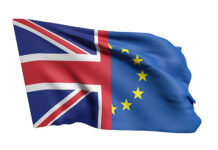As widely expected, the Federal Open Market Committee (FOMC) raised the target range for the federal funds rate by 25 basis points to between 1 and 1-1/4 percent.
The Committee also expects to begin normalizing the balance sheet later this year, having outlined a plan to gradually reduce its holdings by tapering reinvestments in its Treasury and MBS portfolio. The Fed expects to cap runoff at $10 billion per month initially ($6bn for UST/$4bn for MBS) before raising it to $50bn per month within a year with the same 60/40 split between UST and MBS.
The Committee was somewhat sanguine on the economy, indicating that activity has been "rising moderately" while the labor market "continued to strengthen" as job gains "moderated but have been solid" and unemployment declined. The statement highlighted consumer spending has accelerated recently, while business investment continued to expand. Inflation was viewed as having "declined recently" while the core measure is running "somewhat below 2 percent," but expected to stabilize near the target over the medium-term. At the same time, inflation expectations were viewed as little-changed and still low.
The Summary of Economic Projections saw the Committee lower its unemployment forecasts by 0.2 to 0.3 percentage points through 2019, anticipating the jobless rate to average 4.3% this year and 4.2% over the subsequent two years, with the Committee’s view of unemployment over the longer-term 0.1pp lower at 4.6%. At the same time, the FOMC revised its near-term inflation outlook, lowering its 2017 average for PCE and core PCE deflator by 0.3 and 0.2pp, respectively, given the weaker data to date. GDP projections were slightly higher at 2.2% for this year (from 2.1% as of March SEP), but remained unchanged for 2018 and 2019, at 2.1 and 1.9%, respectively.
The SEP interest rate projections were largely unchanged, with the median dot still suggesting one more hike later this year, with three apiece next year and in 2019. The median projection for the equilibrium rate hasn’t changed, but the range has tightened to between 2.5% to 3.5%.
There was one dissenter with Kashkari (FRB Minneapolis) voting against the remaining Committee members, given his preference to keep the rate unchanged.
Key Implications
This statement was largely as expected, with the Fed emphasizing the continued labor market improvement and accelerating economic growth as reasons to be optimistic for the economic and inflationary outlook. As such, the Fed appears unfazed by the recent inflationary slowdown, viewing it as temporary despite another weak CPI print this morning. Echoing that view was the SEP, which lowered near-term inflation projections, but left the forecasts for the coming years unchanged.
Given the lower inflation projections it was somewhat surprising that the dots were little changed, suggesting another rate hike and the beginning of the normalization process later this year. The Fed did lower its view of the natural rate of unemployment, albeit slightly, suggesting that the Committee is chalking up some of the current inflation misses to what appears to be a lower than previously believed unemployment rate gap.
At this point, we expect the Fed to pay very close to inflation numbers going forward. Should the low unemployment begin to generate the anticipated wage and inflation gains, another rate hike is very much a possibility later this year, as is the start of balance sheet normalization. However, should inflation continue missing, we would expect the Fed to pare back its rhetoric and likely further lower its projections for the natural rate of unemployment.












